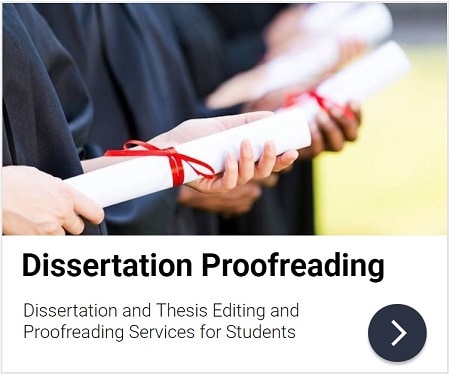8.4 Quoting and Translating Languages Other than English
Many doctoral candidates will need to quote material from languages other than modern English in their theses, so some advice on quoting and translating such material may prove useful. Generally speaking, the rules, principles and practices used when quoting passages in English should be applied when quoting foreign languages as well, so all that I have said about quotations in the earlier sections of this chapter applies here as well. There may, however, be special characters, diacritics and particular conventions to follow for certain languages: for more information on the use of foreign languages in English texts, see Butcher et al. (2006, Section 6.6 and Appendices 5, 7, 9 and 10), the Chicago Manual of Style (2003, Chapter 10) and Ritter (2005, Chapter 12), all of which contain lists of the alphabets and special characters used in particular languages. The assumption behind quoting material in languages other than English is that the quotations will be understood by the intended audience, which means that those readers will need to be fluent or specialists in the language quoted and/or the topic discussed: in a literary study of a German author, for instance, it can usually be assumed that interested readers will understand the original language, and in a thesis aimed at classicists, it is most likely that passages in Greek and Latin will be accessible to those readers. You should therefore have a good idea of who your intended readers are and what languages they are likely to read; if you think English translations will help your readers understand the quotations you use and thus your argument and thesis as a whole, it is wise to provide such translations.
In many cases, providing an English translation of a passage originally in a foreign language is more appropriate than quoting the original language. You should, however, inform readers that they are reading a translation, which is usually done by quoting from a reliable published English translation and providing an appropriate reference. As a general rule, only if an available translation is unsuitable for your purposes should the passages you wish to quote be newly translated. If you do use your own translations in your thesis, you should include some indication that the translation is your own. This can be achieved most easily immediately after a translated quotation by adding in parentheses along with the reference or in a note ‘my translation’ or ‘translation mine.’ If you have yourself translated all of the quotations from non-English texts (or from any one non-English text) that you use in your thesis, an explanation in conjunction with the first instance (whether with the parenthetical reference or in a note) can explain the situation: ‘All translations of passages quoted from foreign languages are my own’ would work or perhaps ‘Unless otherwise noted, all translations from Les Misérables are my own.’ Remember that while previously published English translations and your own new English translations of foreign texts are acceptable for quotation in scholarly writing, retranslations are not: for example, if a book was originally published in English, but you have used it in a German translation, any quotations from that book should nonetheless be taken from the original English, not translated back into English from the German translation (the German translation might be included along with the original source in your reference list, however).
If language is a focus in your thesis or quotations are discussed in detail, you may want to provide both the original language and a translation of any quotations. There are various different ways of supplying this combination: the foreign language or the translation might precede the other; the original might be provided in full with only partial translations or the translation might be complete with only occasional words from the original; the original and the translation might both be embedded or set as block quotations, or one might appear in the text in one of these forms while the other is relegated to a note; translations of poetry might take the form of verse or prose, and for quotations from Middle or Old English texts, a more modern version of difficult words might be provided as glosses. The following are common formats and practices for providing foreign-language and translated quotations:
- Original and translation of an entire quotation: whether the original language or the translated version is provided first in the text, the other should normally follow and be enclosed in either parentheses or square brackets. University or department guidelines will rarely indicate a preference for square brackets or parentheses in such situations, but style guides seem to recommend parentheses more often than square brackets, as in the following example: In Watts (1912, p.462) the line reads ‘Dicebam haec, et flebam, amarissima contritione cordis mei (I was saying these things and weeping in the bitterest contrition of my heart).’ When square brackets are used, they tend to be used more often in displayed quotations, while parentheses are the usual choice for the second version in embedded quotations. Occasionally, a slash with spaces on both sides is used between the original and translated versions of a quotation, in which case no brackets are necessary – ‘Dicebam haec, et flebam, amarissima contritione cordis mei / I was saying these things and weeping in the bitterest contrition of my heart’ – but this is rare compared with the use of brackets and parentheses. If the second version in a block quotation is the original language, it can be set in italics instead of brackets, and while this may be acceptable for distinguishing the original language in such situations, quotations in any language should not usually be set in italic font. If the second version of a quotation (either in the original language or a translation) is presented in a note instead of in the main text, no brackets are used in the note; instead, the passage in the note should be placed in quotation marks.
- Original, translation and reference: if a second version of a quotation, whether it is the original or a translation, is needed as well as a parenthetical reference, there are four possibilities. The second version of the quotation can be provided in square brackets and the reference in parentheses; both can be provided in the same set of parentheses with a semicolon separating the two; each can be provided in a separate set of parentheses with the closing parenthesis of the first backing onto the opening one of the second; or either the second version or the reference can be provided in a note instead. The first and last of these methods are probably the best in terms of both clarity and style, with the first taking this form: ‘Dicebam haec, et flebam, amarissima contritione cordis mei [I was saying these things and weeping in the bitterest contrition of my heart]’ (Watts, 1912, p.462).
- Entire original or translation with partial translation or original: when either the original language or the translation of an entire quotation is provided along with only certain words of the translation or the original, parentheses or square brackets are used inside the main quotation to enclose the words provided from the other version. This method is also the preferred method for providing modern equivalents of Old and Middle English words. The added words often appear in italic font, especially if they represent the foreign language, in which case italics allow you to use the nominative form of a word from an inflected language (see Section 6.2.2 above), but roman font and/or quotation marks can be used instead, particularly for translated words. Parentheses seem to be the most common choice for such interpolated words, whether they are in the original language or translations – ‘I was saying these things (haec) and weeping in the bitterest contrition of my heart (cor)’ – and parentheses in such situations have the advantage of distinguishing the foreign or translated words from other interpolations or comments that you may need to add in square brackets. Though used less frequently than parentheses for adding original or translated words, square brackets are nonetheless appropriate for this purpose because the words from the second version are interpolated into the quotation, and such brackets are especially appropriate if you wish to offer any comments along with the words from the second version. If, however, either parentheses or square brackets are used for other purposes in the quoted passage (parentheses for parenthetical information provided by the original author, for example, or square brackets for variant readings that you include), it will be clearest not to use that type of bracket for words from the original text or a translation as well.
- Quotation marks: when quoting and translating foreign languages in the form of block quotations in the main text of a thesis, no quotation marks are necessary around either the original or the translation. If, however, original and translated versions are embedded in your text or presented in a note, quotation marks should be placed around both. Often the quotation marks enclose the whole structure, with the opening quotation mark placed at the beginning of the first version quoted and the closing quotation mark placed after the closing parenthesis or bracket surrounding the second version, as in this example: In Watts (1912, p.462) the line reads ‘Dicebam haec, et flebam, amarissima contritione cordis mei (I was saying these things and weeping in the bitterest contrition of my heart).’ This is certainly the format that should be adopted if square brackets are used to enclose the second version, and it is also the best approach when partial translations or occasional original words are interpolated (either in parentheses or square brackets) in an embedded quotation (see my example using the same Latin passage in the preceding bulleted paragraph). When, however, an original version or translation follows the other and is enclosed in parentheses, two sets of quotation marks are sometimes used, with the first surrounding the first version and the second appearing within the parentheses and enclosing the second version: ‘Dicebam haec, et flebam, amarissima contritione cordis mei’ (‘I was saying these things and weeping in the bitterest contrition of my heart’).
Although it may be appropriate in a single thesis to use one format for quoting a foreign language in one situation and a different one in another, or to provide more of the original or more of the translation in one case than in another in order to communicate whatever might be necessary to enable readers to understand the quotations you use, consistency of style and practice should be observed as much as possible throughout a thesis. The consistent use of brackets (parentheses or square) for the same purposes in all quotations presented in a thesis is particularly important for ensuring that the source is accurately represented and the reader is able to determine what is intended in each case, so their use needs to be carefully planned to accommodate all the situations presented by the quoted passages, and any remaining anomalies should be clearly explained. Finally, your own translations of any quotations should represent the original as faithfully as possible, achieve a scholarly standard of correct English (with allowances for informal speech or writing if that is what you happen to be quoting) and present the material in the way that best serves your particular purposes and supports or advances your overall argument.
PRS Tip: If your thesis contains your own translations of quotations (or even a selection of words or phrases) borrowed from a language other than English and you are planning to engage the services of a professional proofreader, it is always a good idea to let the proofreader know that the translations are your own. An acknowledgement of the kind I have recommended above indicating that the translations are your own will communicate this fact to your proofreader as it does to other readers, but you may want to make your translating activities more explicit in any instructions you provide for your proofreader so that he or she feels free to check and correct if necessary the English of your translations. This is especially important if your first language is not English, because it is often difficult to express in a language with which you are less familiar the subtleties or profundity of the quotations that you have deemed worthy of use. If you also quote a passage in its original language, your proofreader may be able to judge how accurately you have conveyed the original author’s meaning (many of the proofreaders used by PRS, for instance, read and work in other languages as well as English), but even if the original is not available to your proofreader, he or she will be able to determine whether your translation is clear and grammatically correct, and also whether it expresses what other aspects of your text suggest the quotation should express. You can then compare your proofreader’s suggestions with the original text and make whatever adjustments might be necessary. Dealing with translated material is only one among many reasons to treat yourself to the proofreading services offered by PRS, which are quick, affordable and completely confidential. The PRS drop box at https://www.hightail.com/u/CEDS offers a safe and efficient way to submit your writing for proofreading, and the PRS team is more than happy to answer questions and provide any help you may need 24 hours a day from Monday to Friday. Please visit the PRS web site at http://www.proof-reading-service.com for further information.
Why PhD Success?
To Graduate Successfully
This article is part of a book called "PhD Success" which focuses on the writing process of a phd thesis, with its aim being to provide sound practices and principles for reporting and formatting in text the methods, results and discussion of even the most innovative and unique research in ways that are clear, correct, professional and persuasive.
The assumption of the book is that the doctoral candidate reading it is both eager to write and more than capable of doing so, but nonetheless requires information and guidance on exactly what he or she should be writing and how best to approach the task. The basic components of a doctoral thesis are outlined and described, as are the elements of complete and accurate scholarly references, and detailed descriptions of writing practices are clarified through the use of numerous examples.
The basic components of a doctoral thesis are outlined and described, as are the elements of complete and accurate scholarly references, and detailed descriptions of writing practices are clarified through the use of numerous examples. PhD Success provides guidance for students familiar with English and the procedures of English universities, but it also acknowledges that many theses in the English language are now written by candidates whose first language is not English, so it carefully explains the scholarly styles, conventions and standards expected of a successful doctoral thesis in the English language.
Individual chapters of this book address reflective and critical writing early in the thesis process; working successfully with thesis supervisors and benefiting from commentary and criticism; drafting and revising effective thesis chapters and developing an academic or scientific argument; writing and formatting a thesis in clear and correct scholarly English; citing, quoting and documenting sources thoroughly and accurately; and preparing for and excelling in thesis meetings and examinations.
Completing a doctoral thesis successfully requires long and penetrating thought, intellectual rigour and creativity, original research and sound methods (whether established or innovative), precision in recording detail and a wide-ranging thoroughness, as much perseverance and mental toughness as insight and brilliance, and, no matter how many helpful writing guides are consulted, a great deal of hard work over a significant period of time. Writing a thesis can be an enjoyable as well as a challenging experience, however, and even if it is not always so, the personal and professional rewards of achieving such an enormous goal are considerable, as all doctoral candidates no doubt realise, and will last a great deal longer than any problems that may be encountered during the process.
Interested in Proofreading your PhD Thesis? Get in Touch with us
If you are interested in proofreading your PhD thesis or dissertation, please explore our expert dissertation proofreading services.


Services
PhD Dissertation Proofreading
Our PhD dissertation proofreaders specialise in improving grammar, sentence structure, citations, references, clarity, logical flow and readability.
Master’s Dissertation Proofreading
To avoid failure and its consequences, send your dissertation to our master’s dissertation proofreading service.
Dissertation Proofreading Services
Our dissertation proofreaders specialise in correcting and perfecting the language, editorial styles and references across all science fields.
Headquarters
Dissertation-Proofreading.com
Allia Future Business Centre
The Guildhall
Market Square
Cambridge
CB2 3QJ
United Kingdom
More Expert Proofreading Services
Journal Editing
Journal article editing services
PhD Thesis Editing
PhD thesis editing services














